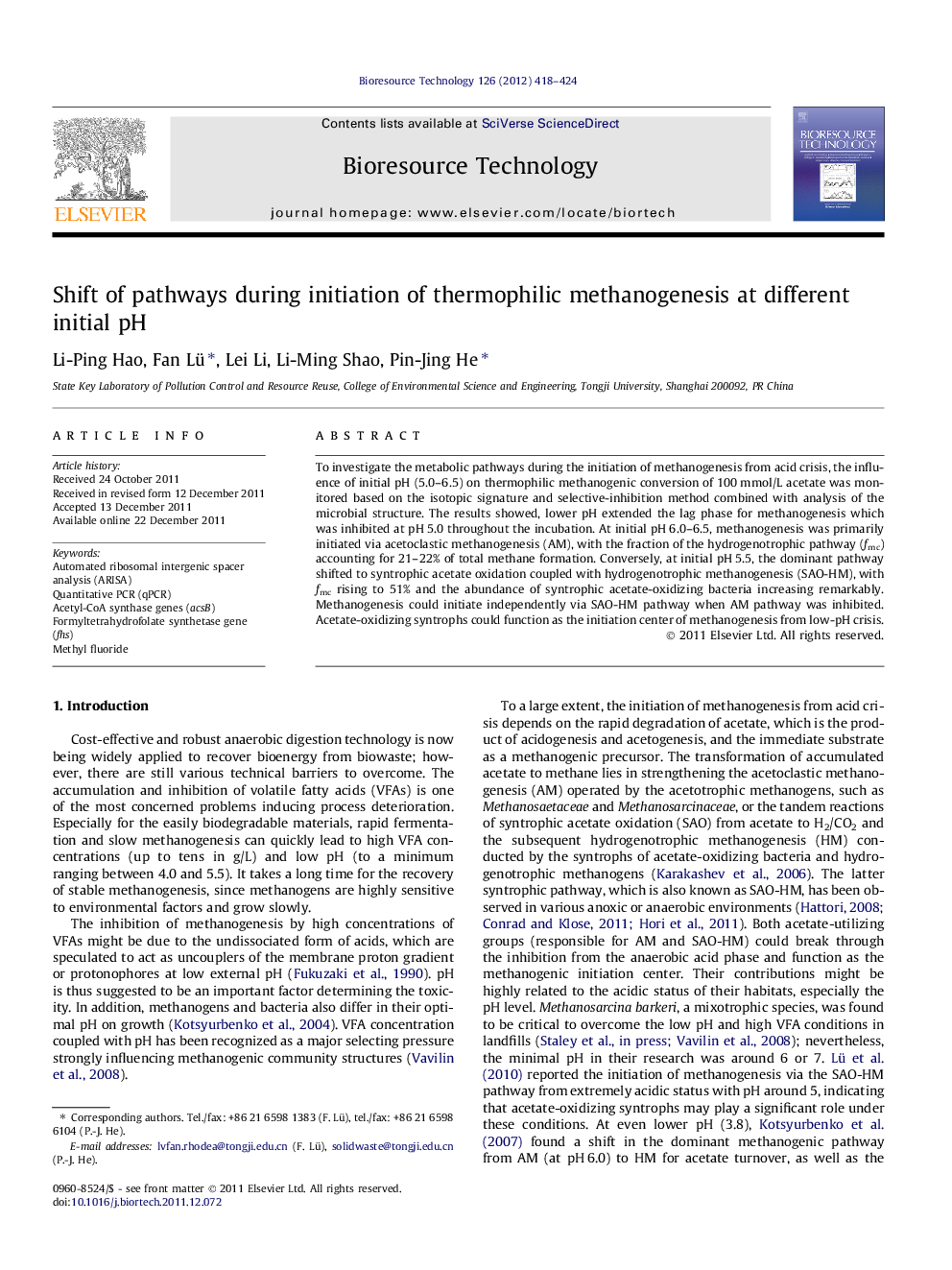| کد مقاله | کد نشریه | سال انتشار | مقاله انگلیسی | نسخه تمام متن |
|---|---|---|---|---|
| 681302 | 1460017 | 2012 | 7 صفحه PDF | دانلود رایگان |

To investigate the metabolic pathways during the initiation of methanogenesis from acid crisis, the influence of initial pH (5.0–6.5) on thermophilic methanogenic conversion of 100 mmol/L acetate was monitored based on the isotopic signature and selective-inhibition method combined with analysis of the microbial structure. The results showed, lower pH extended the lag phase for methanogenesis which was inhibited at pH 5.0 throughout the incubation. At initial pH 6.0–6.5, methanogenesis was primarily initiated via acetoclastic methanogenesis (AM), with the fraction of the hydrogenotrophic pathway (fmc) accounting for 21–22% of total methane formation. Conversely, at initial pH 5.5, the dominant pathway shifted to syntrophic acetate oxidation coupled with hydrogenotrophic methanogenesis (SAO-HM), with fmc rising to 51% and the abundance of syntrophic acetate-oxidizing bacteria increasing remarkably. Methanogenesis could initiate independently via SAO-HM pathway when AM pathway was inhibited. Acetate-oxidizing syntrophs could function as the initiation center of methanogenesis from low-pH crisis.
► Methanogenic pathways during initiation from acid crisis at different initial pH were studied.
► The dominant pathway was acetoclastic methanogenesis at initial pH values of 6.0–6.5.
► It shifted to syntrophic acetate oxidation coupled with CO2-reducing pathway at initial pH of 5.5.
► The abundance of syntrophic acetate-oxidizing bacteria increased greatly at initial pH of 5.5.
► Methanogenesis can initiate via the syntrophic pathway with the acetoclastic pathway inhibited.
Journal: Bioresource Technology - Volume 126, December 2012, Pages 418–424